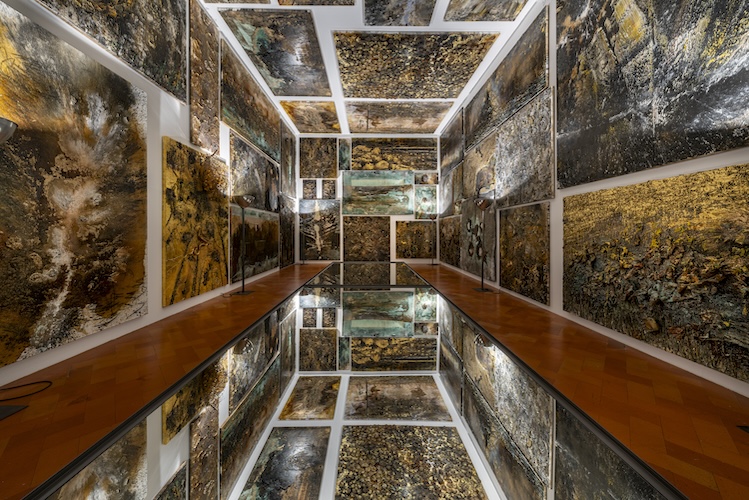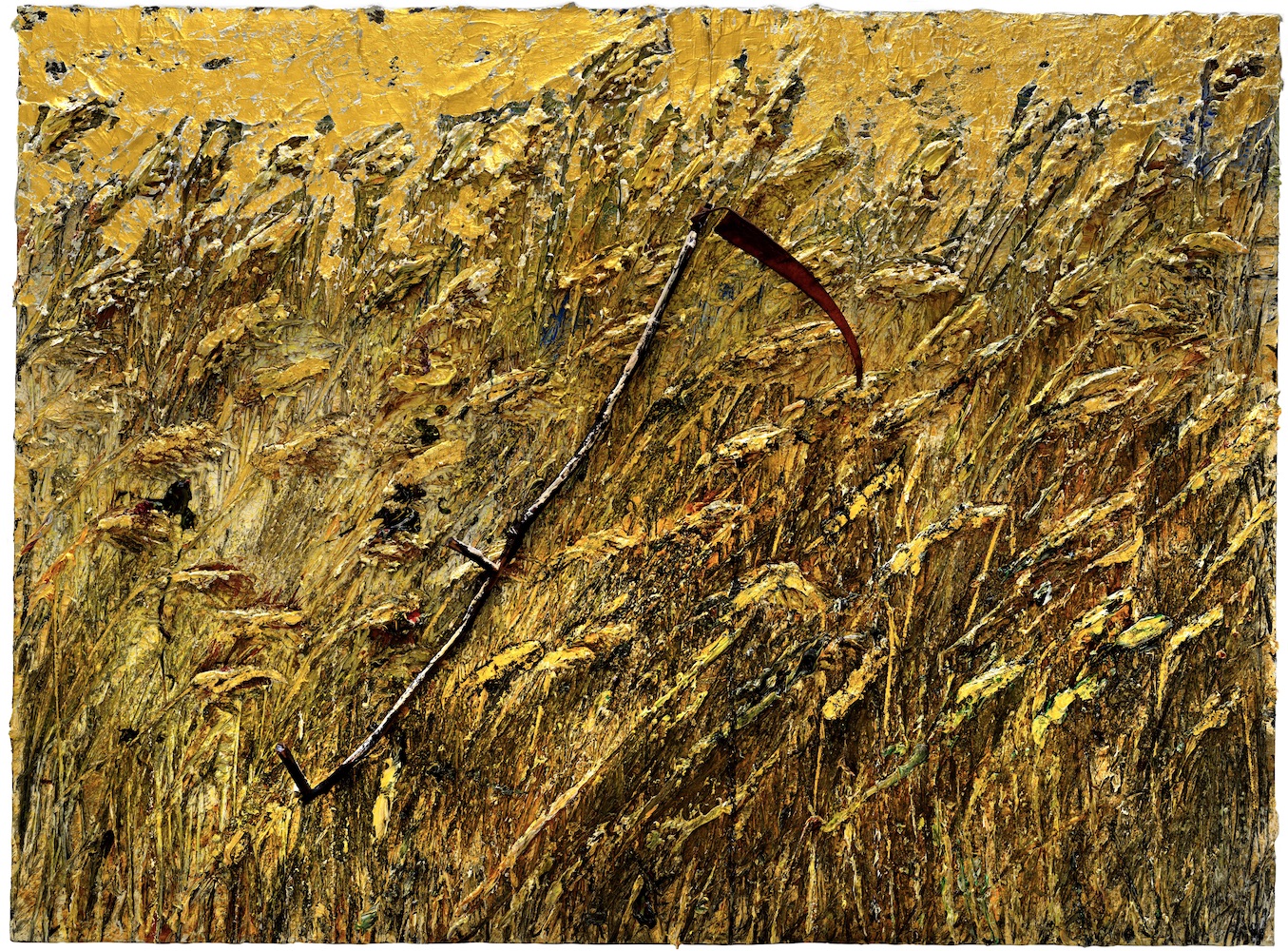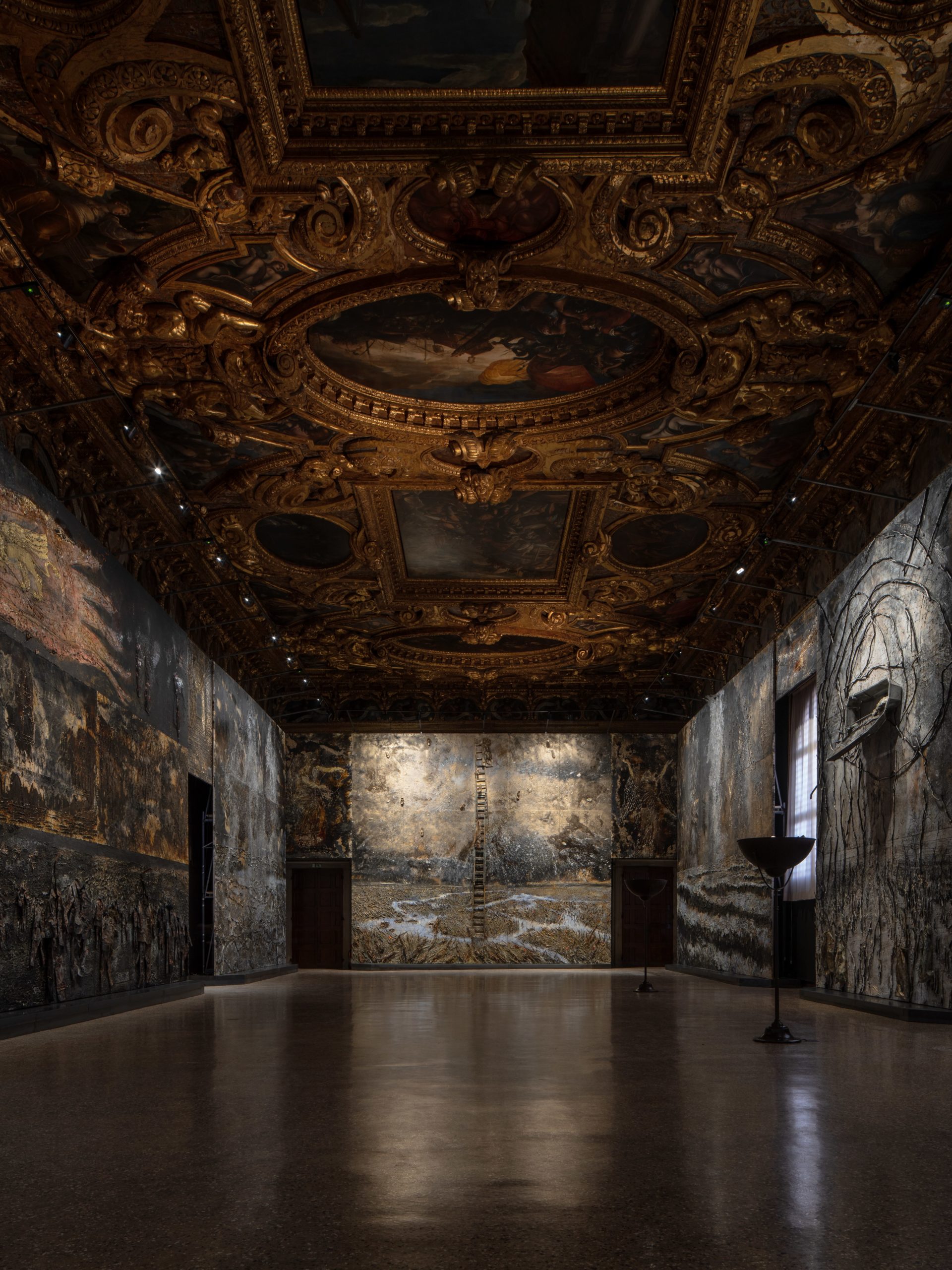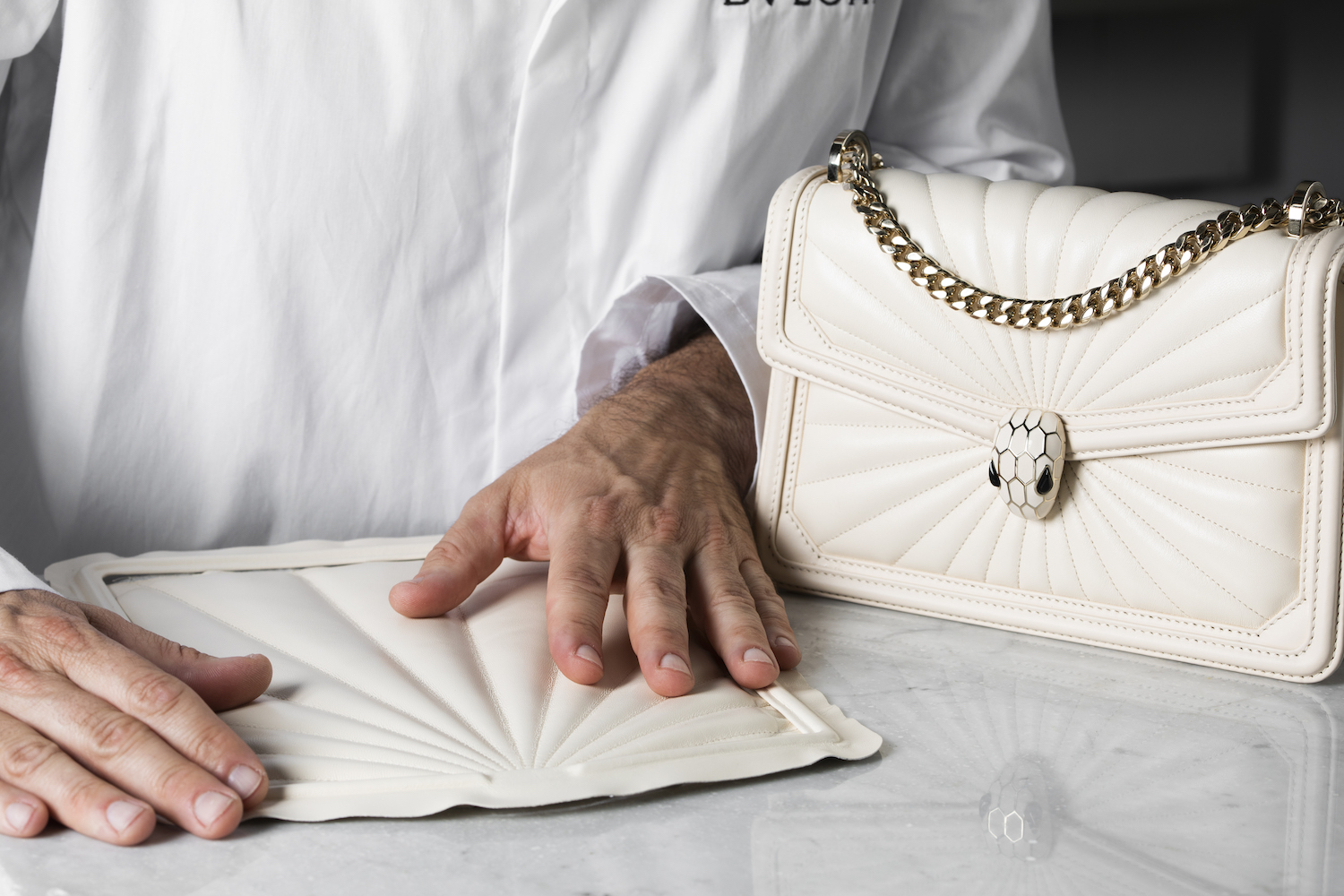The term ‘Fallen Angels’ denotes the celestial beings expelled from heaven due to their rebellion against God. This emblematic concept, akin to humanity’s own narrative, serves as the focal point for Kiefer’s exhibition at Palazzo Strozzi, unfolding as a profound exploration that delves into themes of identity, history and philosophy. Through the mediums of painting, sculpture, installation and photography, Kiefer’s artistic oeuvre offers a profound introspection into the human condition, intricately weaving connections between past, present and future. This exhibition is on view from March 22nd to July 21st, 2024, at Palazzo Strozzi in Florence.
Curated by Arturo Galansino, General Director of the Fondazione Palazzo Strozzi, the exhibition offers direct engagement with Kiefer’s renowned body of work, characterized by its profound, multi-layered explorations of memory, myth, history, literature, and poetry. It spans the Renaissance courtyard and the rooms of the Piano Nobile, thereby providing visitors with an immersive encounter with the diverse artistic repertoire of Anselm Kiefer, which encompasses painting, sculpture, installation, and photography. Featuring twenty-five works, including both historical pieces and new creations, the showcase includes an immersive installation comprising 60 canvases of varying formats.
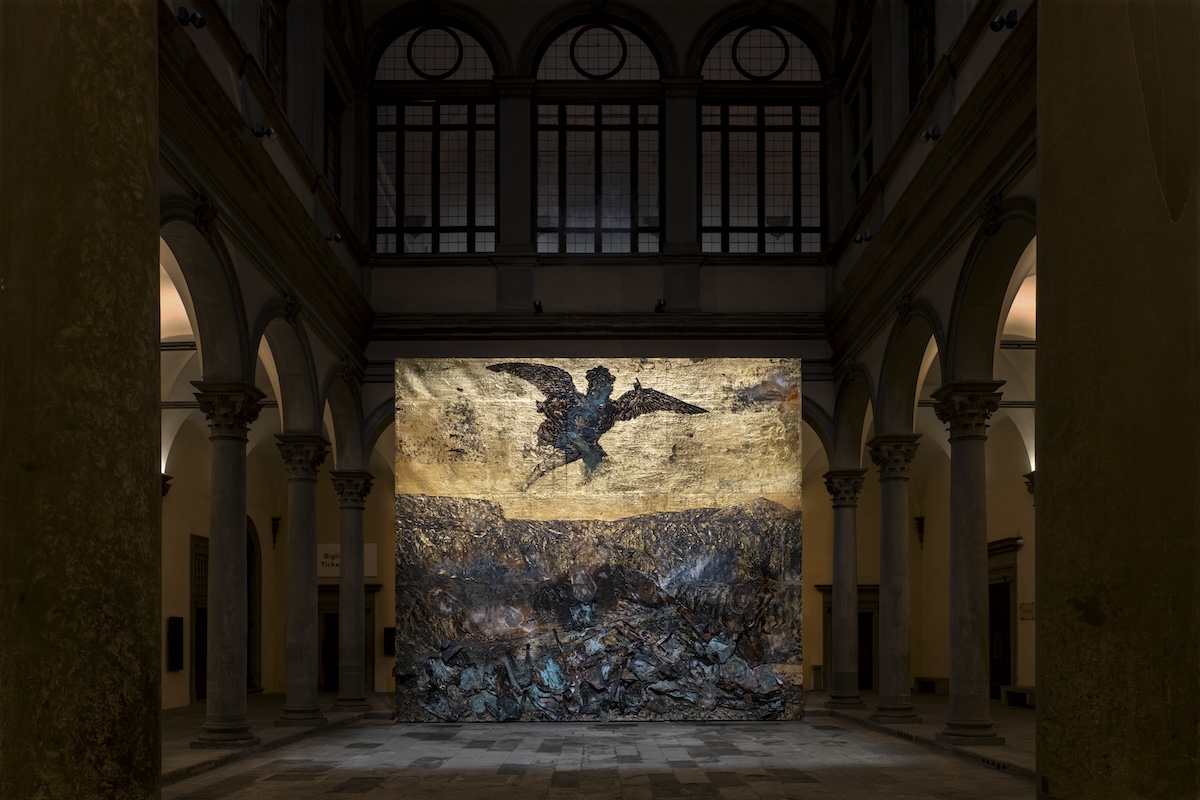
Anselm Kiefer, “Engelssturz” (“Fall of the Angel”) 2022–2023, Installation view, © Anselm Kiefer, © Palazzo Strozzi, courtesty of the artist.
Anselm Kiefer Reevaluates the Interplay Between the Spiritual and the Material
The focal point of the exhibition is the recent creation for the courtyard of Palazzo Strozzi, entitled “Engelssturz” (“Fall of the Angel”, 2022–2023), engaging in a profound dialogue with the austere Renaissance architecture through its commanding materiality and monumental dimensions exceeding seven meters in height. This expansive painting portrays the renowned passage from the Book of Revelation depicting the clash between the archangel Michael and the rebel angels, serving as a metaphor for the eternal struggle between Good and Evil. Enriched by the expansive context of the open space reaching towards the sky within the courtyard of Palazzo Strozzi, it transforms into an invitation to reevaluate the interplay between the spiritual and the material, serving as an allegory for humanity’s universal quest for meaning.
Through the audacious utilization of diverse media and techniques, Kiefer crafts works endowed with a palpable physical and material presence, forging an immediate rapport with the beholder. Possessing a profound fascination with their alchemical essence, Kiefer transmutes raw materials such as lead, seeds, earth, flowers, sand, and ashes into formidable and suggestive works characterized by their dense stratifications. Subjected to processes such as electrolysis or fire, the assorted elements undergo tangible physical metamorphosis. The intricate visual strata of his creations offer manifold interpretations, perpetually unveiling fresh intricacies and significance to the discerning observer.
A Solemn Admonition on the Perils of War and Violence Unfolds
In the Piano Nobile, the motif of “fallen angels” emerges prominently in the inaugural chamber with the work “Luzifer” (“Lucifer”, 2012–2023). Kiefer delineates the rebellious celestial being plunging into the abyss, reimagined through materials that draw from contemporary and recent historical contexts. The stark and ominous lead aircraft wing jutting out from the amalgamation of substance serves as a direct reference to warfare, a recurrent theme in Kiefer’s body of work. While the aircraft wing may symbolize the violence and devastation wrought by war, the conglomeration of material can evoke the tumult and ruin it leaves in its aftermath. The descending figure, instead, stands as a poignant image of humanity’s decline, issuing a solemn admonition on the perils of war and violence.
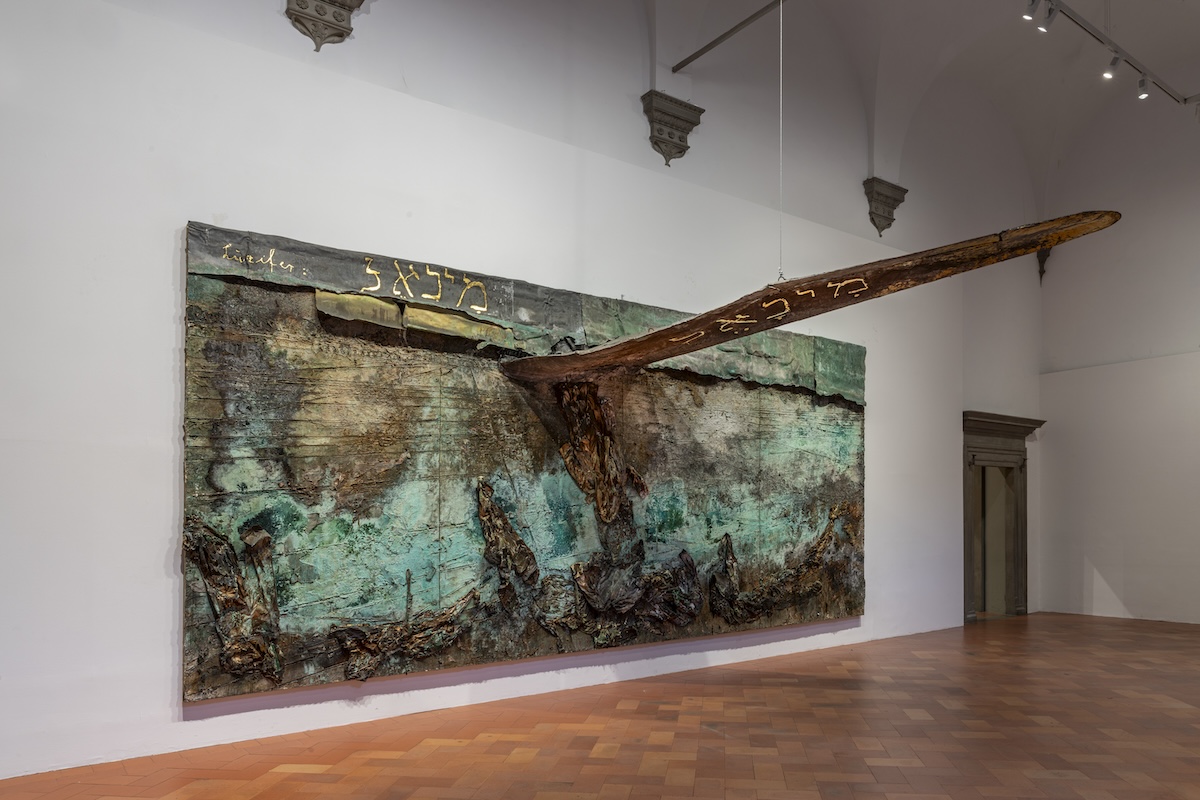
Anselm Kiefer, “Luzifer” (“Lucifer”, 2012–2023) Installation view, © Anselm Kiefer, © Palazzo Strozzi, courtesy of the artist.
Kiefer Delves into the Frailty of Power, and the Victory of Light over Darkness
In the next chamber, Kiefer delves into the volume “Héliogabale ou l’anarchiste couronné” (“Heliogabalus: or The Crowned Anarchist”) authored by the French polymath Antonin Artaud, who was an artist, actor, and dramatist. “Für Antonin Arthaud: Helagabale” (“For Antonin Artaud: Heliogabalus”, 2023) work is dedicated to the Roman emperor Marcus Aurelius Antoninus, also known as Heliogabalus, a subject of Kiefer’s artistic exploration since the seventies. As a youthful emperor in the third century AD, Heliogabalus enforced the worship of Baal, the sun god, as the state religion. He met his demise through drowning, an act intended to suppress his rebellion, thus becoming an emblem of the frailty of power. “SOL INVICTUS Heliogabal” (“Unconquered Sun: Heliogabalus”, 2023) is the name of the second expansive canvas within the room, distinguished by its radiant gold backdrop and towering sunflowers. Here, Kiefer evokes pagan rites celebrating the victory of light over darkness.
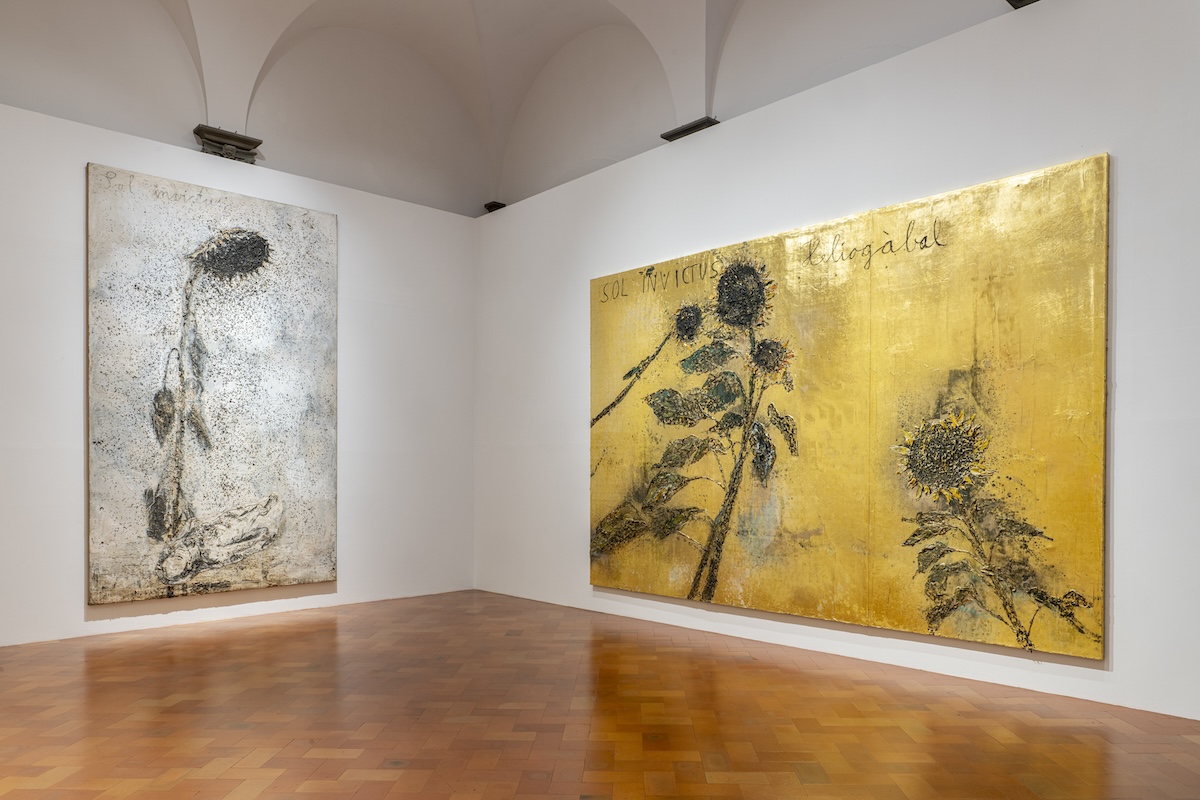
Installation view of “Fallen Angels,” © Anselm Kiefer, © Palazzo Strozzi, courtesy of the artist.
The Visionary’s Artistic and Philosophical Tributes are Presented in Florence
Throughout Kiefer’s oeuvre symbols of sunflowers and snakes reoccur. The serpent assumes multifaceted significance, serving as a metaphor for renewal owing to its innate capacity for shedding skin, thereby metaphorically aligning with the artist’s own process of self-rejuvenation. Similarly, the sunflower, embodying the dual symbolism of the celestial orb and terrestrial realm, may also be construed as an emblematic representation of the artist himself. Importantly, Kiefer has consistently exhibited deep admiration for Van Gogh, expressing his reverence through artistic tributes and written reflections since his adolescent years.
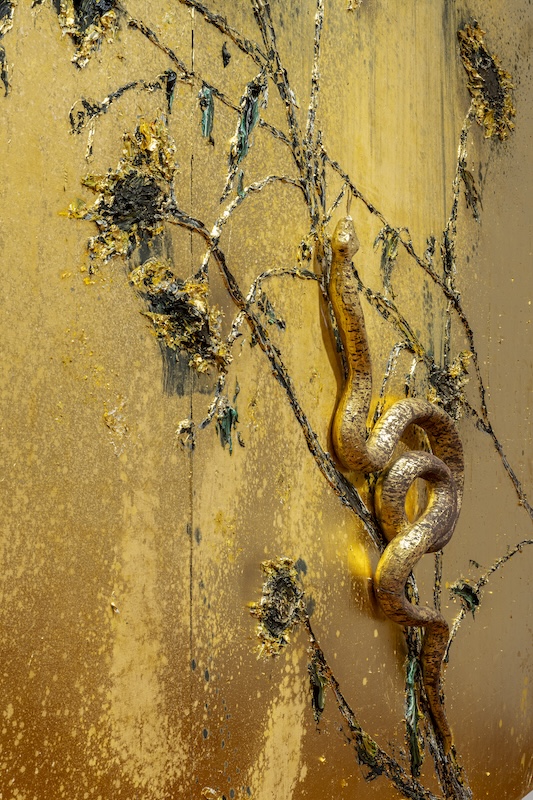
Anselm Kiefer, “Für Antonin Arthaud: Hélagabale” (“For Antonin Artaud: Heliogabalus”), (detail), 2023; © Anselm Kiefer, © Palazzo Strozzi, courtesy of the artist.
Kiefer contends that “painting is philosophy”. Consequently, a part of the exhibition is dedicated to this discipline, which has consistently informed the artist’s oeuvre. Presented here are three recent expansive canvases, unveiled for the first time at Palazzo Strozzi.
“La scuola di Atene” (“The School of Athens”, 2022) evokes Raphael‘s fresco in the Stanza della Segnatura (circa 1509–1511), featuring a congregation of philosophers within a classical edifice. “Vor Sokrates” (“Before Socrates”, 2022) portrays a sort of genealogy of pre-Socratic thinkers including Archimedes, Anaximander, Anaximenes and Parmenides. Meanwhile, “Ave Maria” (2022) by Kiefer depicts both pre-Socratic and post-Socratic philosophers, ranging from Heraclitus and Epicurus to Plato and Aristotle. While pre-Socratic philosophers primarily explored natural and cosmological explanations of the world, often resorting to elements such as water, air and fire, post-Socratic philosophy shifted its focus to humanity and knowledge, probing into ethical, political and epistemological realms.
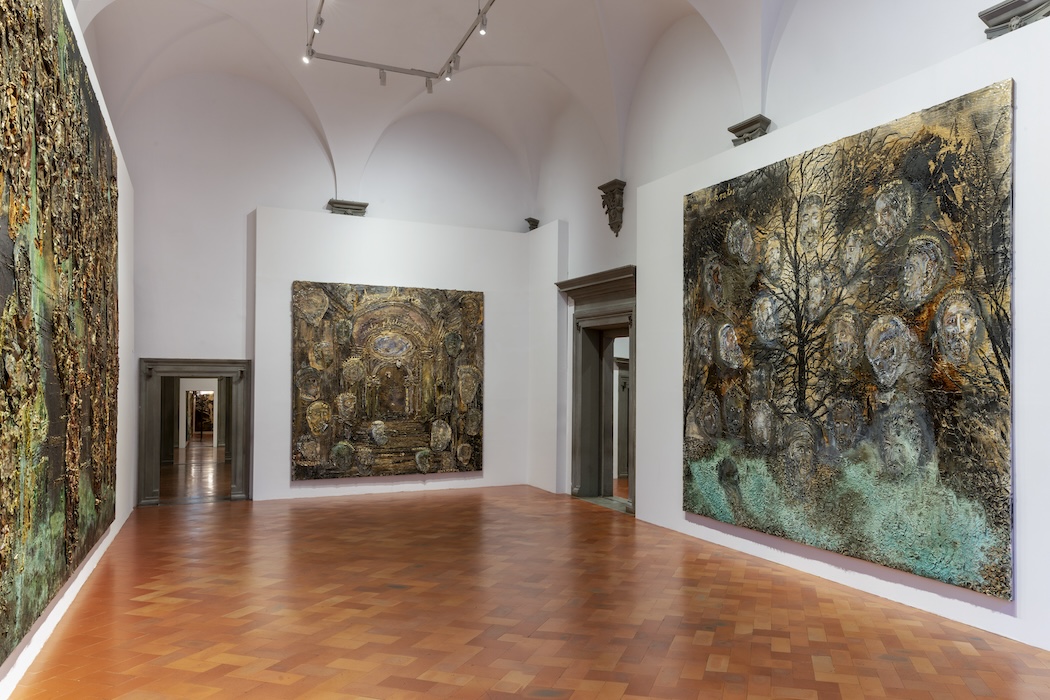
Installation view of “Fallen Angels,” © Anselm Kiefer, © Palazzo Strozzi, courtesy of the artist.
Another philosophical reference emerges through the monumental woodcut “Hortus Philosophorum” (“The Garden of Philosophers”, 1997–2011). This piece portrays a field of sunflowers in a distinctly vertical format, expressing the longing to reconcile earth and sky. One sunflower draws sustenance from the navel of a reclining nude figure, ostensibly representing the artist himself, while evoking teachings of Robert Fludd (1574–1637), an English philosopher, physician, occultist, and alchemist, who proposed that each earthly plant corresponds to a celestial star. The posture of the figure, appearing lifeless or in the shavasana pose of yoga, marking the connection between the terrestrial and celestial realms, hinting at an initiatory journey that transcends the fear of human mortality.
Vitrines Serve as Miniature Worlds curated by Anselm Kiefer
The central chambers of the exhibition showcase an array of vitrines, an artistic medium frequently employed by Kiefer since the 1980s. These vitrines serve as miniature worlds, curated by Kiefer, housing a plethora of materials and objects intricately intertwined with sentences inscribed by the artist’s own hand. Functioning as guardians of contained materials, these vitrines establish a realm of protection and control, allowing these elements to inhabit their own designated space. Simultaneously, they serve to accentuate the themes of alienation and isolation recurrent throughout Kiefer’s oeuvre. Positioned at a distance, spectators are compelled to engage with the artwork, prompting contemplation on the diverse realms and symbolic narratives interwoven within Kiefer’s creative universe.
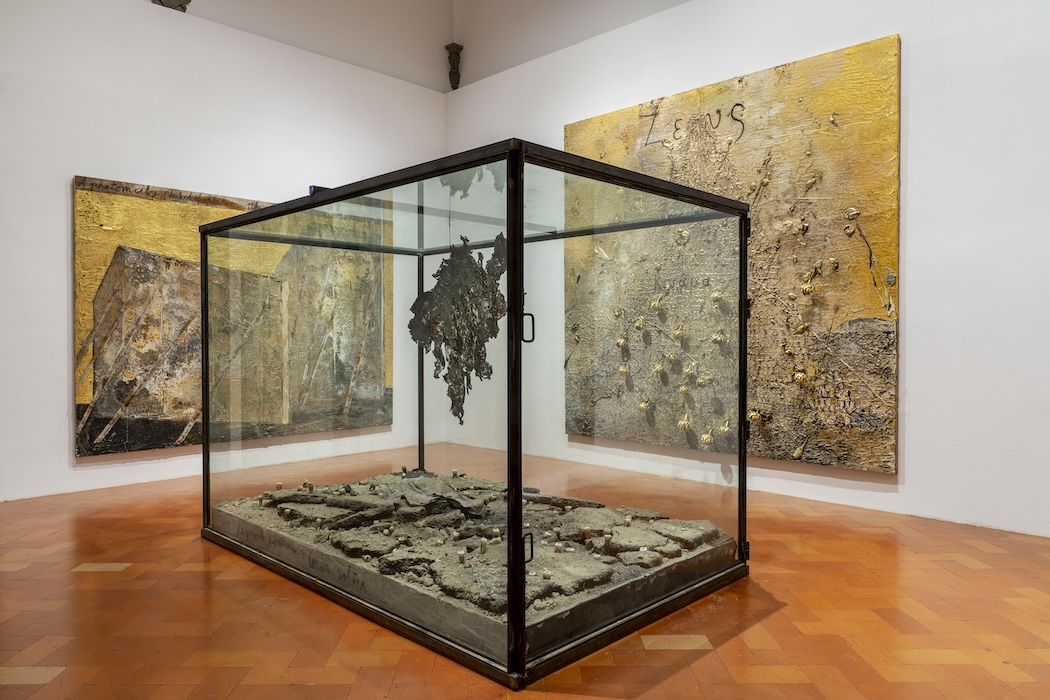
Installation view of “Fallen Angels,” © Anselm Kiefer, © Palazzo Strozzi, courtesy of the artist.
“En Sof” (“The Infinite”, 2016) delves into the realms of Kabbalistic philosophy and Jewish mysticism, while “Das Balder Lied” (“The Song of Balder”, 2018) draws inspiration from “Danae”, a classic literary piece from the Scandinavian mythology. Among Kiefer’s chosen materials is lead, favored for its versatility and symbolic resonance, embodying alchemical motifs owing to its transformative properties. Conversely, the vitrines’ glass acts as a semi-permeable membrane, bridging the realm of art with the external world in a dialectical dance, as elucidated by the artist.
A Mesmerizing Array of Sixty Paintings Envelop Viewers
Transitioning from the central space, the immersive installation “Verstrahlte Bilder” (“Irradiated Paintings”, 1983–2023) unfolds, enveloping viewers in a mesmerizing array of sixty paintings that adorn the walls and ceiling of one of Palazzo Strozzi’s grandest chambers. Complemented by table-like mirrors strategically positioned at the room’s core, the installation ensnares observers within its dense layers, evoking a sense of all-encompassing immersion. Kiefer’s use of “irradiated paintings”, marked by scars and discoloration, imparts a poignant, melancholic aura, hinting at life’s fragility and the enduring potency of artistic expression. Through mediums such as oil paint, shellac, and fabric, Kiefer embarks on a haunting exploration of themes centered on destruction, decay and the human condition. As Kiefer attests, “Destruction is part of the creative process. I place my paintings outside; I submerge them in baths of electrolysis. Last week I showed a series of paintings that have been subjected for years to a sort of ‘nuclear radiation’ inside containers. Now they are suffering from radiation sickness and have become temporarily marvelous.”
Mythology Emerges as a Recurring Motif Within the Exhibition
Mythology, both personal and collective, emerges as a recurring motif within the exhibition, as Kiefer draws inspiration from his vast archive of materials, themes and compositions. “Der Rhein” (“The Rhine”, 1982–2013) pays homage to Kiefer’s childhood and his profound connection to the eponymous river, an emblem of German identity. “In Dem unbekannten Maler” (“To the Unknown Painter”, 2013), Kiefer assumes the guise of the “unknown painter”, commemorating artists who endured repression, censorship or historical oblivion. Classical mythology finds expression in works like “Daphne” (2008–2011) and “Nemesis” (2017), where nymphs pursued by Apollo and the goddess of retribution are depicted as 19th-century dresses, their identities hinted at through symbolic attributes.
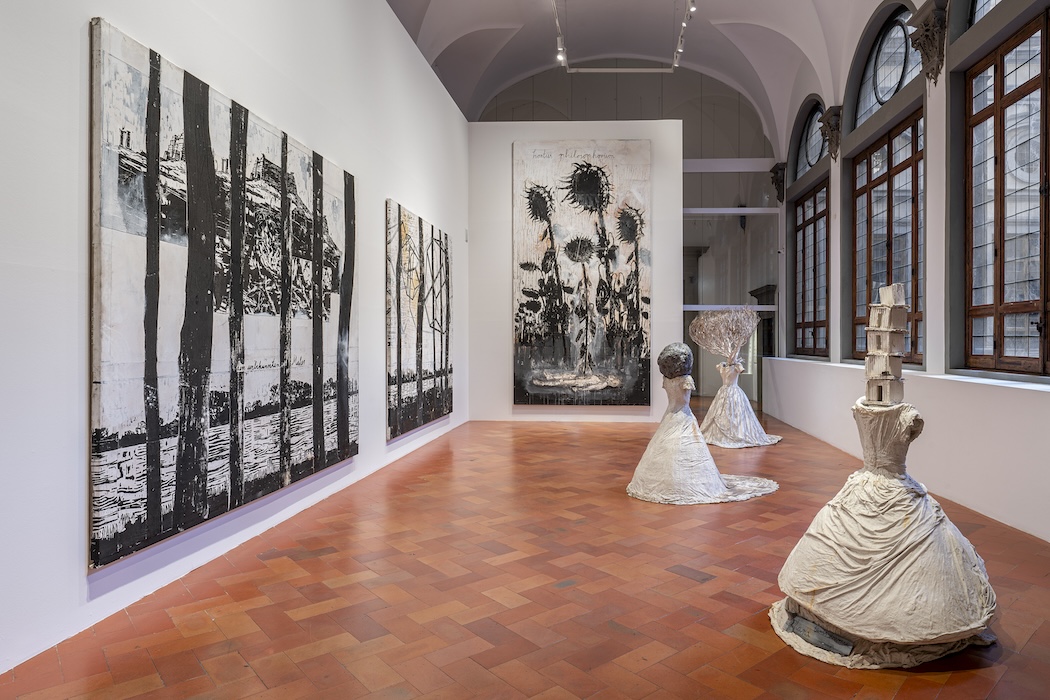
Installation view of “Fallen Angels,” © Anselm Kiefer, © Palazzo Strozzi, courtesy of the artist.
Anselm Kiefer Provocatively Interrogates Germany’s Recent History
The exhibition culminates in a dedicated segment showcasing Kiefer’s renowned “Heroische Sinnbilder” (“Heroic Symbols”) series, presented through four lead-printed photographs. In 1969, Kiefer orchestrated what he termed “Besetzungen” (“Occupations”), captured in various European locales once occupied by the German army during World War II. Dressed in his father’s Wehrmacht officer uniform, Kiefer recreates the Sieg Heil salute, albeit in a decidedly non-martial manner, provocatively interrogating Germany’s recent history of Nazism.
Within this setting two key themes are emphasized: the ephemeral nature of human life and the unstoppable march of time. It also highlights the importance of poetry, writing and language in Kiefer’s art. Adorning a wall within the exhibition space are verses transcribed by the artist and written in 1930 by Italian poet Salvatore Quasimodo:
“Everyone stands alone at the heart of the world. Pierced by a ray of sunlight. And suddenly, it’s evening.”
The Exhibition Extends an Invitation to Explore the Intricacies of Existence
Kiefer’s work is all about the rejection of limits — not merely in terms of scale and materiality, but also through the inexhaustible wealth of resources with which he delves into the depths of memory and history. Kiefer made his debut in Germany in the late sixties, presenting works that, among the earliest, sparked contemplation on the legacy of World War II and Germany’s emotional and cultural heritage. This marked the beginning of his artistic journey wherein myth, religion, mysticism, poetry, and philosophy all intertwine.
According to Arturo Galansino, General Director of the Fondazione Palazzo Strozzi and curator of the exhibition, “At Palazzo Strozzi, Kiefer’s works will, for the first time, engage in dialogue with Renaissance architecture, thereby enriching the layers of their significance encompassing themes such as memory, history, and war. Consequently, the exhibition extends an invitation to all visitors to explore the intricacies of existence across past, present and future, and within the dialectic between spirituality and materiality.”
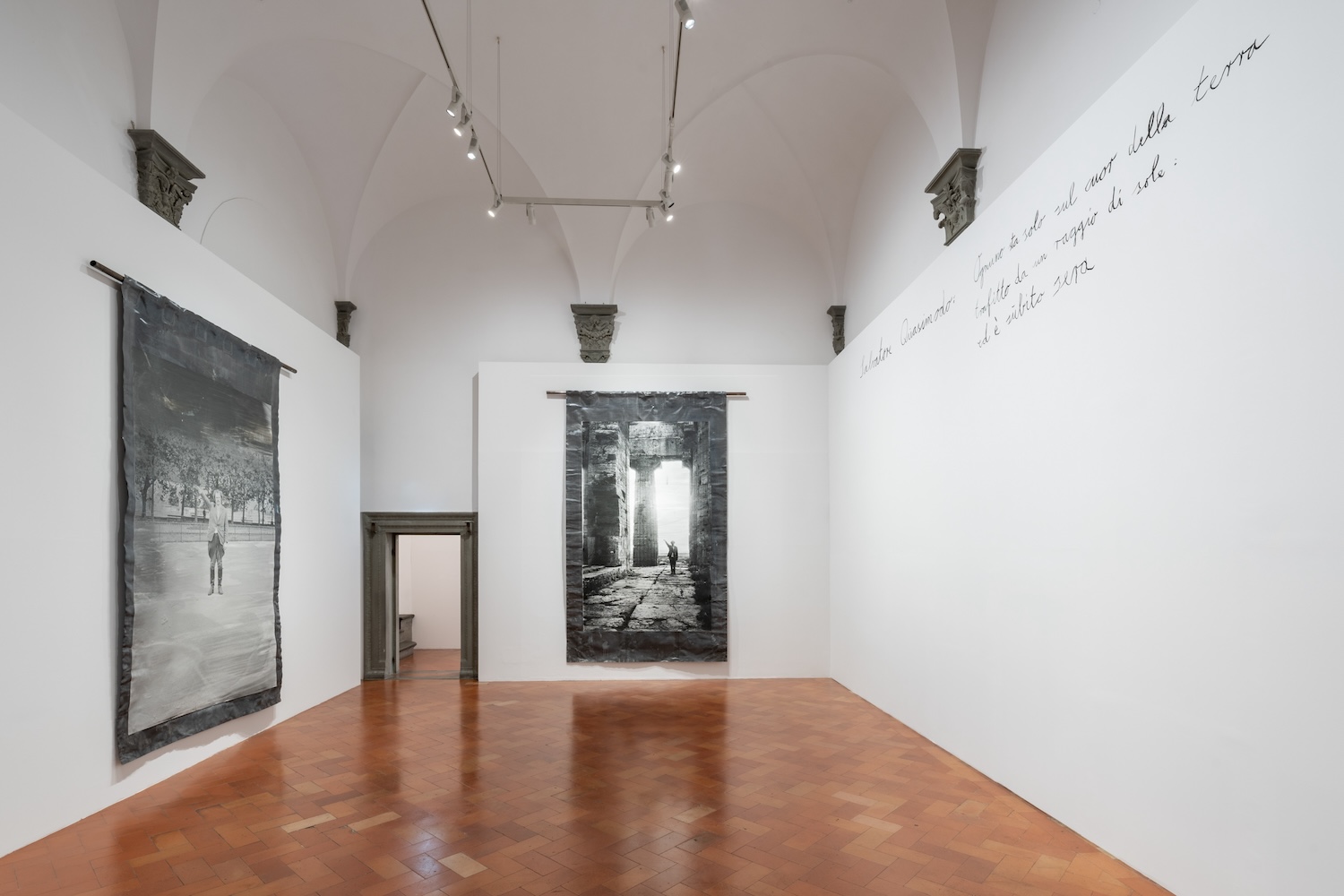
Installation view of “Fallen Angels,” © Anselm Kiefer, © Palazzo Strozzi, courtesy of the artist.



